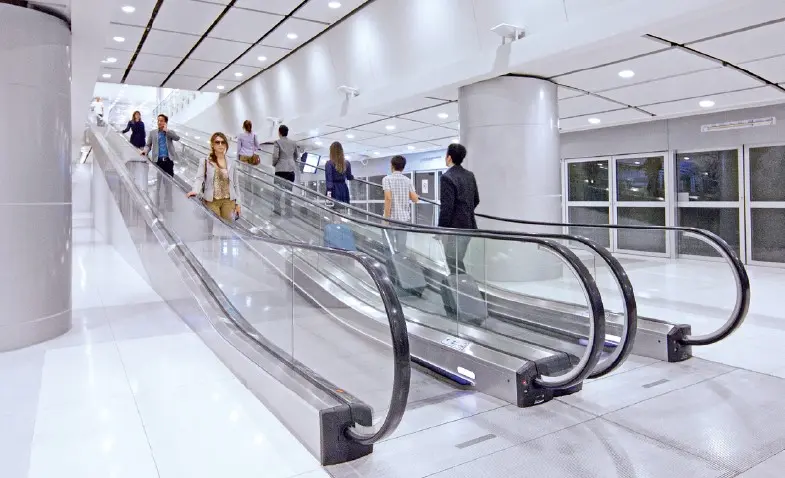Could Your Building Benefit from a Moving Walkway?
A primary form of vertical transportation, moving walkways were invented in 1893 and debuted at the World’s Columbian Exposition in Chicago, Illinois. This was an attraction that gathered crowds from across the country. Being able to transport from one end to another without so much as a single step was revolutionary for this time and put the invention on the map in a historic way.
As time has progressed, moving walkways have been installed in areas with heavy pedestrian traffic. While we might typically see these machines indoors on flat surfaces, they are actually rather versatile.
Despite their initial popularity, some property owners now question the advantage of having a moving walkway. With elevators and escalators now commonplace in most buildings, what types of properties could benefit from a moving walkway? Let’s take a look at how they can improve your building’s overall convenience.
What Are the Real Benefits of a Moving Walk?
As citizens from around North America flock to find homes in metropolitan cities, the urban population has grown exponentially. With this growth comes the obstacle of increased foot traffic. One of the easiest methods to resolve this challenge is to install a moving walk.

Alongside the distinct advantage of allowing passengers to walk at faster speeds and, moving walks plot a path. This is an undeniable perk for cities and properties, as they can watch as traffic patterns become clearer. It also improves the experience from a passenger’s perspective — the crowd around them thins, and they are able to travel with confidence and less frustration. In addition, we’ve learned that reducing congestion in areas with higher populations can minimize the transmission of viruses.
The future of urban mobility includes moving walks for these reasons as their new designs are reaching greater lengths, widths and heights. But where are moving walks best utilized?
Building Types That Benefit from Moving Walkways
If you close your eyes right now and picture a moving walkway, where is it located? The odds are it’s an airport. Airports, and buildings like them, are perfect spaces for a moving walk.
Airports are large spaces with people rushing from one gate or terminal to another. As we know, moving walkways are an efficient way to transport commuters at a faster pace while helping traffic flow smoothly. But, when you think about it, there are many other large commercial buildings or properties that could benefit from such a technology.
Any public transportation hub like a train station would be a good fit for a moving walk, but several others are overlooked, like multi-floor superstores. Inclined moving walkways allow shoppers to easily take their shopping cart with them between floors.

Shopping centers aren’t the only spaces that could benefit from inclined moving walks. They can also be seen in exhibits or for entertainment. Ski resorts have famously been known to use them to help visitors up smaller slopes while theme parks position them strategically to aid the flow of traffic in congested areas.
Museums, zoos and aquariums set the speed slow for their moving walks as patrons are taken on a ride for optimal views of their exhibits. The adaptability of this technology is exceptional with designs for indoor and outdoor moving walks that shape cities and their renowned buildings.
Could Your Building Benefit from a Moving Walkway?
Depending on your building type and location, a moving walkway could be just the tool you need to bring your space to the next level. Not only can they be made to fit the traffic flow needs of your property, but they can also be fashioned to meet your building’s aesthetic.
If you’re interested in exploring moving walkway options or modernizing your old one, check out our exciting offerings here.
 United States
United States

